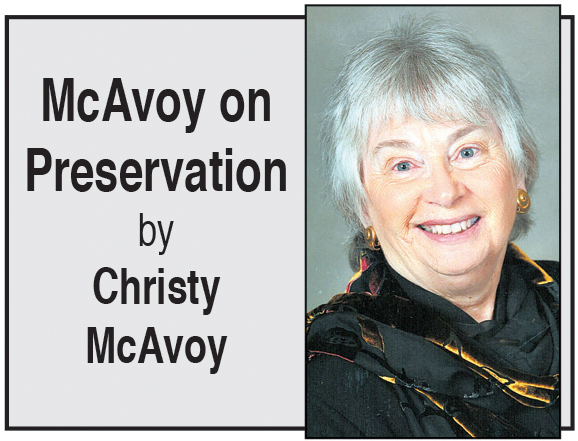Does the past have a future in Hollywood? Not according to Plan

The calendar has turned, and a new year is underway. Resolutions invariably find their way into the conversation. Resolutions are usually personal, something we commit to because we want to change a habit, become a better or healthier person.
Resolutions enter the public realm through a community plan, a collective resolve to create a livable and functioning city for future generations. This month such an activity begins (again) in Hollywood, with a discussion of the Hollywood Community Plan.
There are many worthwhile goals and objectives designed to keep this significant part of the city viable, and many needs (housing, transportation, open space) to be addressed.
I’m concerned with just one, for now. This is not to say that other issues don’t need serious discussion. But, be it resolved that … the collection of buildings and landscapes which embody Hollywood’s historic character and heritage be preserved through a robust series of implementable measures outlined in the Plan.
Currently, the draft Plan pays lip service to heritage in a chapter which identifies a general willingness to acknowledge the importance of historic resources. But it is light on the specifics of how to go about this. The accompanying draft Environmental Impact Report (EIR) succinctly states that there is no way to avoid significant impact on individual resources and offers no mitigation measures to lessen that impact. There is no doubt that, in the coming decades, individual resources (both identified and designated) will be lost. To not take this opportunity to create a plan for preservation and continued use within the Community Plan is a huge mistake.
Rhetoric without implementation can’t save buildings, community character, or neighborhoods. We have many tools to use: the proposed Community Plan Implementation Overlay (CPIO) is a start, but procedures have not been adequately identified and the CPIO does not cover the entire plan area. Good identification work has been done by the former Community Redevelopment Agency (CRA) and SurveyLA. Urban design plans for specific areas funded by the CRA are in progress. The city-wide zoning update known as “Re:code” offers opportunities. Some of these have been implemented in other Community Plan areas but are missing in the Hollywood documents.
Leadership is needed. Both Councilmen Mitch O’Farrell and David Ryu have voiced support for preservation in the past. Hollywood Heritage, the Los Angeles Conservancy and others have provided “best practices” examples to both. What a gift to residents of Hollywood and nearby neighborhoods if the plan could provide a clear road map to preservation of all identified and designated resources and districts throughout the Plan area. Data shows that there is plenty of room for compatible development in the area. We just have to have the conversation. The legacy and story of Hollywood is at stake.
Comments due
Comments on the plan are due Thurs., Jan. 31. You can read the Plan at hcpu2.org and the Draft EIR at the Department of City Planning’s website (planning.lacity.org [click on “Environmental Review” and then “Draft EIR”]). Contact Hollywood Heritage or the Conservancy if you wish to become involved or send individual comment letters to city planner Linda Lou at linda.lou@lacity.org. The greater Windsor Square Hancock Park area has greatly benefited from its specific plans and Historic Preservation Overlay Zones (HPOZ). Resources of like quality to the north deserve equal protection.
Category: Real Estate


